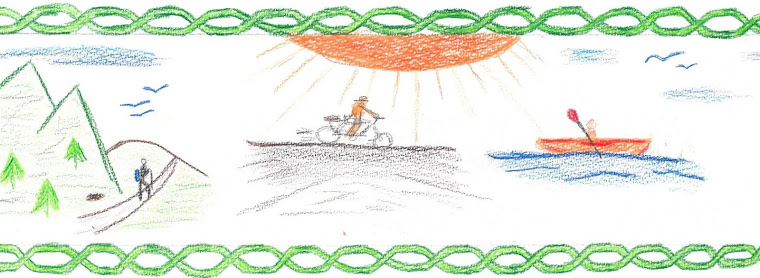Lectionary Ruminations 2.5 is a further revision and refinement
of my Lectionary Ruminations and Lectionary
Ruminations 2.0. Focusing on The Revised Common Lectionary Readings
for the upcoming Sunday from New Revised Standard Version (NRSV) of the Bible, Lectionary Ruminations 2.5 draws on over thirty years of pastoral
experience. Believing that the questions we ask are often more important
than any answers we find, without over reliance on commentaries, I intend with
sometimes pointed and sometimes snarky comments and Socratic like questions, to
encourage reflection and rumination for readers preparing to lead a Bible
study, draft liturgy, preach, or hear the Word. Reader comments are invited and
encouraged.
Isaiah 40:1-11
40:1 Perhaps this all too familiar passage reminds us that Advent is
a season for the preacher to comfort, while Lent is a season for the preacher
to afflict.
40:2 This sounds somewhat like legal language but good news none the
less. What does it mean to speak tenderly?
40:3 Whose voice is crying out? What wilderness might Isaiah have in
mind?
40:3-4 Having grown up and spent most of my life in the mountains of
West Virginia, I resonate with the imagery of straight highways. On the
other hand, I fear someone might want to relate the “every mountain and hill
shall be made low” and language following to the ecologically devastating
practice of Mountain Top Removal Mining.
40:5 Who or what is the mouth of the Lord?
40:6-7 How do these verses fit in here? Has a new thought begun?
40:8 What does Isaiah mean by “the word of our God?”
40:9 How can the prophet get up to a high mountain if all the
mountains will be made low? Where is God?
40:10 Is this militaristic imagery and language?
40:11This language and imagery seems antithetical to the previous verse
but reminiscent of the reading from Ezekiel 34:11-16, 20-24 two Sunday’s ago on
Christ the King / Reign of Christ. Who
is the mother sheep?
PSALM 85:1-2, 8-13
85:1 Does this verse assume a theology of the land?
85:2 How do you and your church deal with “Selah?”
85:1-2 Compare these verses with Isaiah 40:1-2.
85:8 Does God speak peace only to God’s people?
85:8-9 What about people who do not turn to God in their hearts and
who do not fear God? What does it mean to fear God? What does it mean to
turn to God in your heart?
85:10-11 I like this imagery! The structure appears to be poetic.
85:12 Once again, I wonder if this verse and the entire Psalm assumes
a theology of the land? What is the connection between God and the land,
the land and God? Does this feed into the Arthurian legend and the Fisher
King?
85:13 Is this a personification of righteousness?
2 PETER 3:8-15a
3:8 I do not know where it originated, but there is a joke that
goes something like this. A person asks God if it is true that one day to
God is like a thousand years. God answers “yes.” They then ask God if it
is true that God will give them whatever they ask for. God again answers “yes.”
The person finally asks God for a million dollars. God replies, “OK, I’ll do it
tomorrow.” On the other hand I have often heard this verse used to reconcile
the six day story of creation with evolution as if that solves all the apparent
problems.
3:9 God’s apparent slowness is really a manifestation of God’s
patience.
3:10 Of all the images that one could employ, why employ the imagery
of a thief? What does the author mean by “the heavens”, “elements”,
and “the earth?” Will what is done on the earth not be disclosed until the day
of the Lord?
3:11-12 Shall we refer to this as the “Big Dissolution Theory?”
How do we reconcile this imagery with contemporary cosmology that posits an
expanding universe expanding at an increasing rate and which may expand
indefinitely? What is this verse asking?
3:13 Note that this is a “promise” and not a threat. Where else can
we find “new heavens and a new earth” language? I am reminded of C. S. Lewis’
image of a new heaven and a new earth in the final installment of The
Chronicles of Narnia.
3:14 What might be a spot or blemish?
3:15a Once again, what appears to be the Lord’s tardiness is actually
our salvation.
Mark 1:1-8
1:1 For a minute, there, I thought I was reading the incipit of
Genesis. Exactly what is “the beginning of the good news?”
1:2-3 Déjà vu! Why does Mark quote Isaiah 40:3?
1:4 Never having been a Baptist, I much prefer the NRSV “John the
baptizer” rather than the more familiar “John the Baptist”. What about you? How
did John’s baptism differ from the baptism of the early church?
1:5 I think there is some hyperbole here. Nevertheless, John is
portrayed as a popular guy.
1:6 Has anyone else ever heard the explanation that “locusts” is
not a reference to insects but to a nutty substance from a tree native to
Palestine? What purpose might it serve to describe John this way?
1:7-8 What power did John have? How could John have known all
of this?
1:8 What is the difference between baptism with water and baptism
with the Holy Spirit?
ADDENDUM
I am a Minister Member of Upper Ohio Valley Presbytery of the Presbyterian Church (U.S.A.) and am serving as the Pastor of the Bethlehem United Presbyterian Church, Wheeling, WV. Sunday Worship at Bethlehem begins at 10:45 AM. Here is Bethlehem United's Facebook address: https://www.facebook.com/Bethlehem-United-Presbyterian-Church-102482088303980





